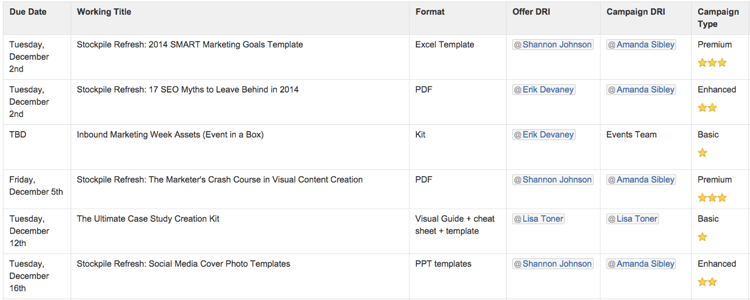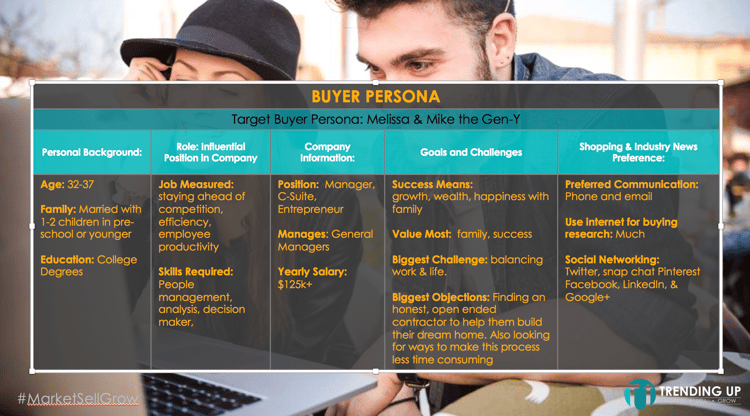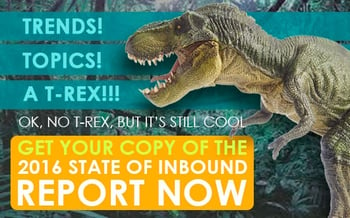Marketing in 2017 is inbound-centric.
In fact, inbound is the preferred marketing method for all companies that spend under $5 million annually on marketing. If your organization spends less than $100,000 on marketing annually, you’re four times more likely to practice inbound than outbound. In the words of Guy Kawasaki, "If you have more money than brains, you should focus on outbound marketing. If you have more brains than money, you should focus on inbound marketing.”
Companies, regardless of marketing spend, were three times as likely to see a higher ROI on inbound marketing campaigns than on outbound when surveyed in 2015. The trend continued for companies in 2016. However, it’s also one of the top marketing challenges in 2016: calculating ROI was the top challenge for 42% of marketers.
Year over year, the core and essence of the inbound methodology remains the same, but there are new plays developing in 2017 that will provide even more success. These are five trends to watch in marketing and sales this year.
1. Adaptive Databases
If there’s one theme in this generation of marketers, it’s data. Not just the standard analytics and form fields, but big data: data that is continually growing and feeds automatically into adaptive databases.
An adaptive database is an intelligent, centralized database that is open to growing sources: online data, social media, and other sources of information about database contacts.
Databases are evolving from static upload and manual-entry-focused entities to more adaptive, living organisms that tap into the vast array of data that’s available across the web. Today’s marketers aren’t just trying to grow number of contacts; we’re trying to grow the amount of information we have about each of those contacts.
Every person on the internet today carries with them an array of data that can be tapped into and leveraged by adaptive databases. For example, an individual contact record in a CRM can pull in every interaction we have with our leads. This includes pages they viewed on our website, emails they’ve opened, videos they’ve viewed, and the times they’ve mentioned us or a keyword we care about on twitter.
Adaptive databases enable two main things:
1. They give sales reps a more complete picture of every given sales opportunity so they can cut through the sales pitch and get to what matters to each lead. The end goal here is more relevant conversations and better opportunity to increase close rates.
2. They enable significantly more tailored communications from our marketing team. By segmenting our contacts, leads, and visitors based on interests, demographics, or behavior, your marketing team can better tailor the communication to each contact. And that brings us to our next trend.
2. Cross-Channel Personalization
We think about personalization a lot when it comes to email. And that makes sense, since personalized emails get about a 20% higher conversions than untargeted emails. One of the biggest changes we have seen with buyers in 2016 and into 2017 is the expectations they have for their entire experience to be tailored.
74% of online consumers get frustrated with websites when content appears that has nothing to do with their interests. The 2016 B2B Buyers Survey from DemandGen said the single most influential aspect of any vendor’s website is “relevant content that speaks directly to [their] company.”
Cross-channel personalization is content that adapts to the person looking at it across varying channels (email, website, landing page, etc.).
Companies personalize their online experiences are starting to see results. In-house marketers who personalize their web experiences see on average a 19% uplift in sales.
To personalize your site, you need two things: the technology to power it, and the digital strategy to make it useful rather than trivial. On the technology side, the ingredients are an adaptive database, a segmentation tool, and a personalization engine that can plug the database into your content tools.
While technology has certainly made personalization easier to do, it has not made it easy to do well. Why? You need a strategy. You need to know your audience, its segments, and where the points of friction are on your website; this information can be researched and created into buyer personas.
Personalization needs to be useful and relevant. It’s not useful to just plop someone’s first name or favorite ice cream flavor on your homepage. It is useful to elevate industry-specific content or remove unwanted or irrelevant material from their viewer experience.
3. Diversified Content
As content becomes more prevalent as a marketing strategy, marketers are turning to a new range of voices and formats to stand-out. Utilizing multiple formats is called diversifying.
These are actual notes from a HubSpot content team planning session. I want to draw your attention to a few things here:

- There is a diversity of formats here, from templates to PDFs/eBooks to visual offers.
- These aren’t all new pieces– some of HubSpot’s best content is evergreen content that is refreshed and updated with new information.
- Finally, you’ll want to note that there’s a distinct promotion plan for each. Those campaigns involve social promotion, emails, website updates etc, and all of these have to be organized in a unified editorial calendar.
As we put this all information in a content plan and calendar, we’re trying to get more efficient as a team, but we’re also trying to figure out what content is actually working best to drive business. This testing process is called growth hacking.
4. Growth Hacking
There has been growing and significant interest in growth hacking over the last two years. Take a look at Google's trend graph for this term:

Growth hacking is a systematic approach to optimizing conversion paths for the highest returns. This is not such a foreign concept for marketers though. Essentially, growth hacking is a view of marketing that takes a systematic approach to testing marketing materials and continuing to use the ones that get the highest returns.
Simply put though, we’re talking about running ongoing and disciplined experiments to increase conversion rates throughout the funnel, then scaling the experiments that work. This is exactly what we do in our marketing and sales strategies that we create for our clients, and what we recommend all B2B clients do to growth leads and sales.
A/B testing is one of the best tools in growth hacking. A/B testing requires you to create two versions of a conversion page, CTA, or other testable content piece and test a hypothesis. For example, would adding a video to a landing page increase or decrease the conversion rate? Is it an influencer or a distraction? You can A/B test anything on your site from a landing page to a call-to-action to a blog post. Whichever converts at a higher rate is what you should continue to repeat.
As an example, here are two variations on a call to action we're currently testing; which appeals to you more?
The practice of growth hacking also takes historical data and applies it to future actions. For example, if we track the following email metrics over a long period of time, we’ll start to see conversion patterns:
- What time and what day an email is sent
- How long a subject line is
- What personalization is included
- How many images are in an email
In email, where it’s such a numbers game, this kind of focus on optimization can radically change your results long-term.
5. Smarketing & Accountability
This last topic is SMarketing, or, what happens when sales and marketing are working together efficiently and holding each other accountable. It’s really about getting all your ducks in a row with a closed-loop process.
87% of the terms sales and Marketing use to describe each other are negative. (Corporate Executive Board)
And yet, they’re sharing the same funnel. The sales process starts long before a lead talks to sales. And the marketing process doesn’t end once a sales rep picks up the phone.
Companies with strong sales and marketing alignment achieve a 20% annual growth rate.
Here are the steps to start your sales and marketing teams on the SMarketing path:
- Agree on target personas and goals
- Implement a Service Level Agreement
- Set up closed-loop reporting
- Add pizza and beer *
*Arguably optional :)
Getting on the same page starts with a core understanding of who you’re selling to, what his or her needs are, what their objectives are, and where their common objections lay. This keeps sales from arguing that marketing doesn’t send quality leads. Here’s an example:

Note all the information filled in for a buyer persona!
Next, the SLA (service level agreement) is an agreement between sales and marketing about how many leads marketing will generate in a given month and how many of those leads sales will work and close. To build a basic one, start with the sales goal, and do some simple math to back into what the leads goal needs to be using the conversion rates you have seen in the past.
Let’s say your revenue goal is $500k, and the average customer pays $10k. That means you need 50 new customers. If your historical lead to customer conversion rate is 2%, that means you need 2,500 new leads. You can take this same principle and go further up the funnel; if you know your visitor to lead conversion rate is 3%, then you need over 80,000 visitors to your website.
Finally, a closed-loop reporting process ensures that both sales and marketing are meeting goals and have the information each needs to help the other be more successful, from marketing creating relevant content to attract leads to sales having the information they need to close sales.
That wraps up the five emerging trends this year. We’ll be presenting another webinar on this topic in April - sign up here to join us!





